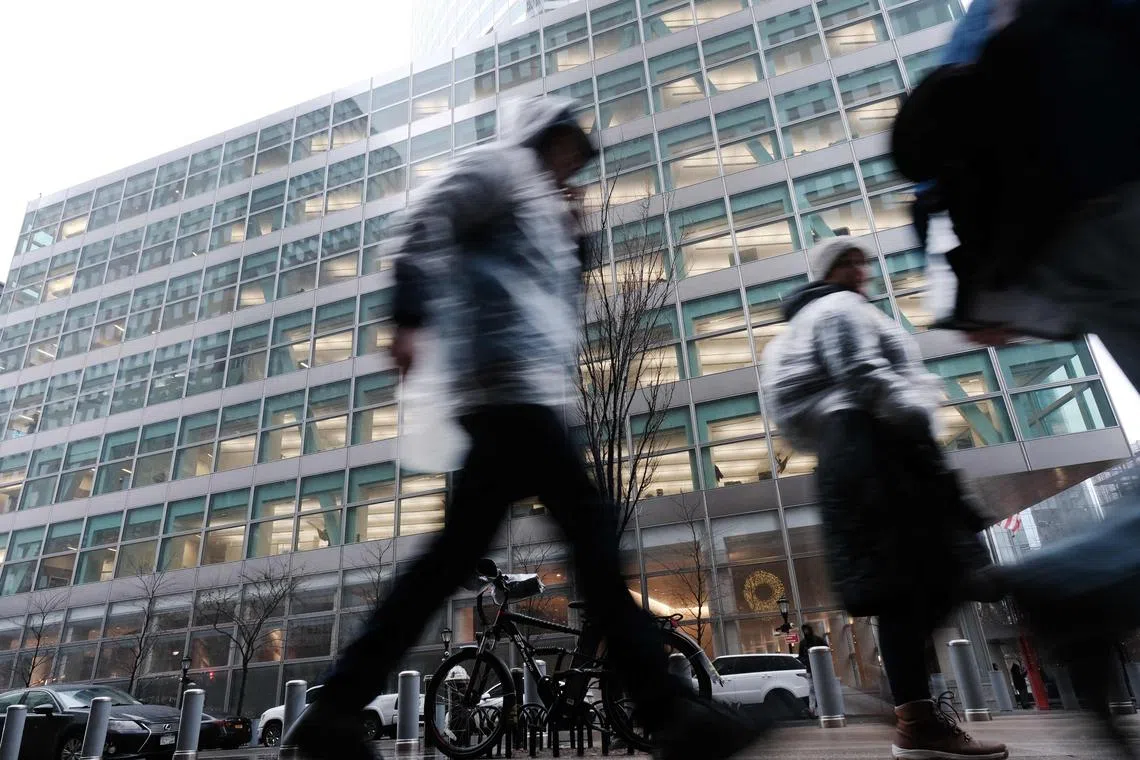Can 15-minute cities work in the US?
Sign up now: Get ST's newsletters delivered to your inbox

In a “15-minute city”, facilities such as offices, schools, shops and parks are within a 15-minute walk or bike ride from one’s home.
PHOTO: AFP
Carlo Ratti, Arianna Salazar-Miranda
Follow topic:
There has been a lot of hype about, and criticism of, the “15-minute city”, a model for mixed-use neighbourhood planning where offices, schools, shops and parks are within a 15-minute walk or bike ride from one’s home.
Some have hailed the idea as the key to an urban utopia, but have wondered if such a concept is even possible in US cities designed for cars. In Britain, alt-right influencers have gone so far as to suggest that the concept is an anti-car conspiracy designed to confine residents.
As researchers at the Massachusetts Institute of Technology, we had a question: Can America – the land of the free and the home of the sprawl – re-weave its urban fabric according to the 15-minute city model and achieve greater walkability?
Our new study has assessed this possibility, and on Feb 5 we published our detailed findings in the scientific journal Nature Human Behaviour. By analysing mobile-phone location data for 40 million Americans, we measured how often a neighbourhood’s residents carry out essential trips within a quarter-hour radius.
First, the study quantifies an important reality: The overwhelming majority of Americans have never experienced anything resembling a 15-minute city.
The median resident, we found, makes only 14 per cent of his consumption trips within a 15-minute walking radius. We are used to a world where every errand is an epic road trip, and we hardly notice the high costs we pay in time, petrol, parking spaces and pollution.
Second, there is significant regional variety.
Many north-eastern communities are quite walkable – New York City enjoys a 15-minute usage of 42 per cent. Unfortunately, some of the fastest-growing parts of the country have the lowest levels of 15-minute usage.
In Atlanta, for example, only 10 per cent of trips occur in a 15-minute radius. It would be difficult to retrofit Atlanta – and other car-centric cities like Phoenix and Dallas – for tight clusters of walkable amenities.
The suburbs would be even harder. When lawns and parking spaces stretch as far as the eye can see, walkability sounds like a pipe dream.
But despite the challenges intrinsic to US planning, American people aren’t naturally allergic to the 15-minute city as a concept; on the contrary, they gravitate to it.
When parks and grocery stores were available nearby, average travel distances fell as people took advantage of them. That may seem like an intuitive, obvious finding – of course people like convenience – but it’s an important one. Even after a century of homogenous zoning and automobiles, Americans automatically use a 15-minute city if they can.
Moreover, Americans build 15-minute neighbourhoods naturally when given the opportunity. Part of our study focused specifically on New York City, where a 1961 zoning code was looser in some neighbourhoods than others. When the city permitted more commercial development, a mix of 15-minute amenities naturally emerged by themselves.
This is an encouraging result. It suggests that elements of walkability and local use can be achieved almost anywhere, through either public interventions that densify neighbourhoods and encourage diverse uses or, just as importantly, zoning reforms that de-homogenise our neighbourhoods and allow local services to pop up on their own.
We might not be able to turn Levittown into Leipzig, but loosening just a few zoning regulations can allow pharmacies, grocery stores, gyms and music shops to pop up on ground floors and empty suburban spaces. Where a 15-minute city is unfeasible, turning a 40-minute city into a 35-minute city would be worthwhile, too.
However, our research also found that the convenience of a 15-minute city may have a serious consequence: increasing segregation.
Our analysis of phone data showed that residents of low-income, 15-minute neighbourhoods were less likely to spend time in physical spaces with people of other economic classes. This could imply a trade-off between local living and social mobility; the urban poor must voyage outside their own neighbourhoods to find economic opportunity.
To meet this challenge, the 15-minute city must be paired with strong investments in improving economic opportunity and reducing residential segregation.
If implemented correctly, the 15-minute city can be an agent of freedom: freedom from traffic jams, freedom to live in a healthy environment and freedom to be outside. It is not a one-size-fits-all solution, but our research shows that almost every community in America could benefit from a few more well-placed amenities. With the 15-minute principle, we can liberate the one thing we cannot make more of: time. BLOOMBERG
Professor Carlo Ratti teaches at the Massachusetts Institute of Technology (MIT) and Politecnico di Milano and is the curator of the Biennale Architettura 2025.
Dr Arianna Salazar-Miranda is a researcher at MIT and the University of Chicago and an incoming professor at Yale University.

